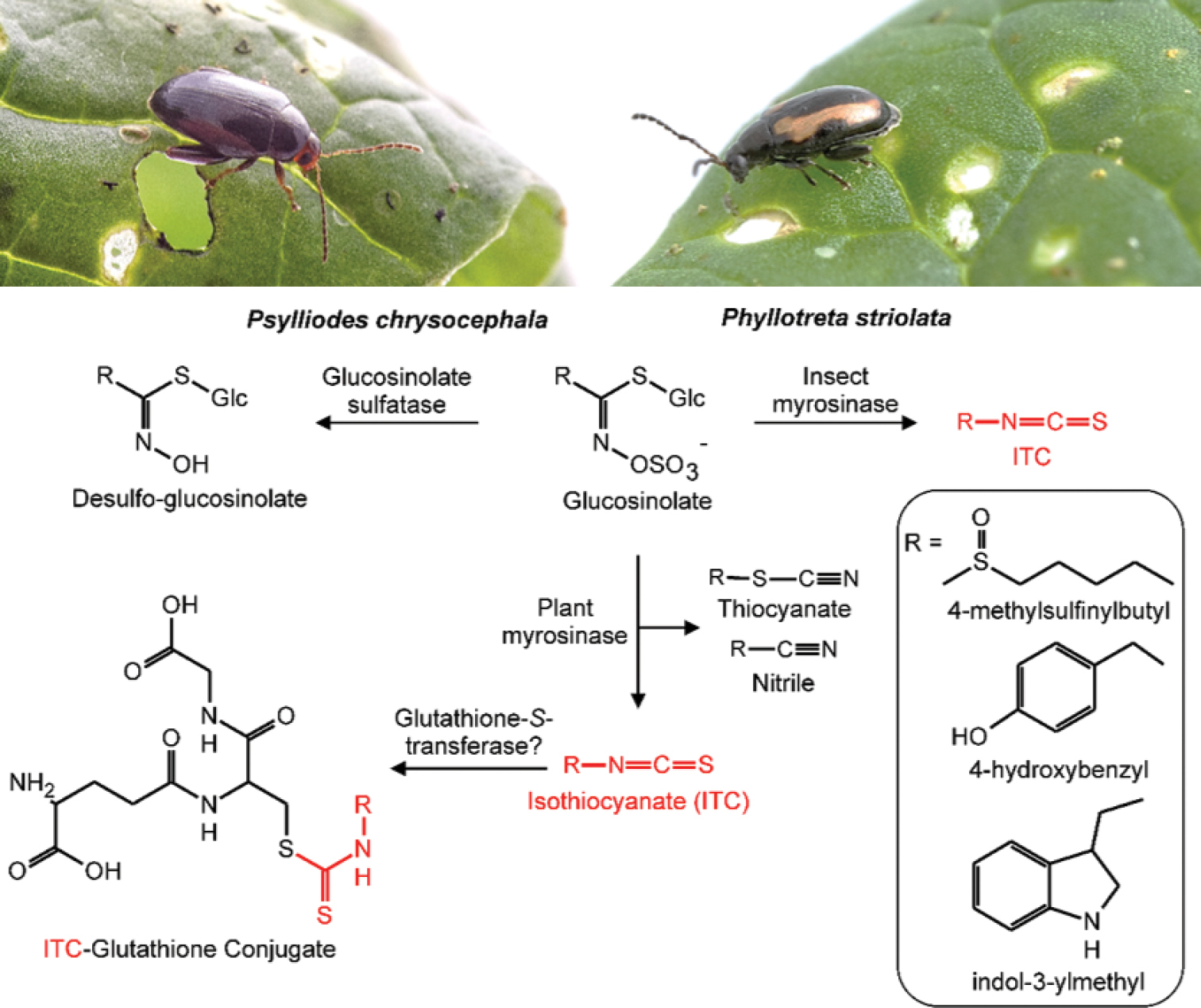
|
||
|
Metabolism of glucosinolates in Psylliodes chrysocephala and Phyllotreta striolata. Upon herbivory, glucosinolates are usually hydrolysed by the plant enzyme myrosinase to an unstable aglucone, which spontaneously rearranges to a toxic isothiocyanate. In the presence of plant specifier proteins, other hydrolysis products such as thiocyanates and nitriles are formed. Both flea beetle species sequester glucosinolates in their bodies, suggesting that not all glucosinolates are hydrolysed in feeding-damaged plant tissue. Sequestered glucosinolates may be activated for defensive purposes by an insect myrosinase in Ph. striolata, but not in Ps. chrysocephala. In addition, Ps. chrysocephala partially detoxifies glucosinolates by desulfation, whereas no glucosinolate sulfatase activity was found in Ph. striolata. According to a quantitative feeding study performed with Ps. chrysocephala, most ingested glucosinolates are activated, and isothiocyanates are detoxified by conjugation to glutathione. The isothiocyanate-glutathione conjugate is metabolized via the mercapturic acid pathway to several cyclic metabolites in Ps. chrysocephala adults (Beran et al. 2018). Examples of three structurally different glucosinolate side-chains are shown in the box. Beetle photos: Anna Schroll. |